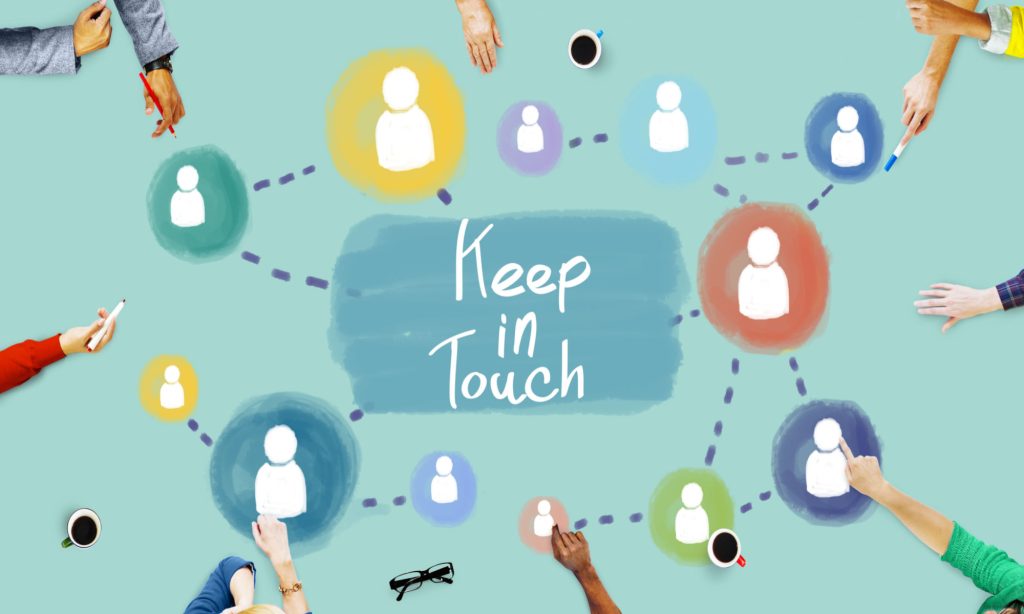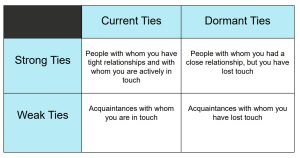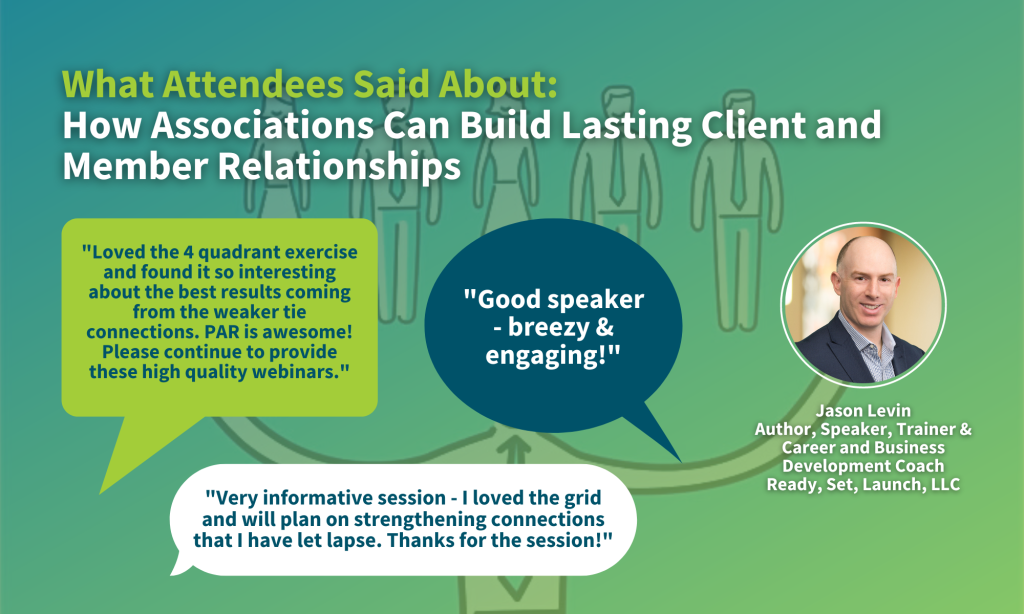Why Your Association Should Normalize Getting Back in Touch

Relationships are difficult to build but easy to lose. In sales it takes hours of prospecting and multiple outreaches to connect with a new customer, but just a few months of inactivity to lose touch. That’s okay according to Relationships to Infinity: The Art and Science of Keeping in Touch author Jason Levin.
“Losing touch is normal,” Levin says. “I want to normalize that getting back in touch is also normal.”
That was the message of Levin’s recent workshop How Associations Can Build Lasting Client and Member Relationships presented by the Professionals for Association Revenue (PAR).
 Getting back in touch begins by understanding the construct of our personal and professional networks. Levin says every network can be divided into strong and weak ties that are either current or dormant. This idea is the foundation of Network Theory research which shows that our weak ties – not our strong ties – hold the greatest potential. It’s why chain letters are most successful when passed through people we barely know, acquaintances help us obtain jobs, and former connections give the best professional advice. These three research findings illustrate the strength of weak ties and the value of reconnecting.
Getting back in touch begins by understanding the construct of our personal and professional networks. Levin says every network can be divided into strong and weak ties that are either current or dormant. This idea is the foundation of Network Theory research which shows that our weak ties – not our strong ties – hold the greatest potential. It’s why chain letters are most successful when passed through people we barely know, acquaintances help us obtain jobs, and former connections give the best professional advice. These three research findings illustrate the strength of weak ties and the value of reconnecting.
But, if we know the value of getting back in touch then why do we avoid it?
Levin explains our hesitancy to reconnect as the result of our own ‘Keep in Touch Bermuda Triangle.’ We feel guilt for falling out of touch, fear about how we will look and worry that a lost contact will be disinterested. These three emotions combine to form a strong barrier to reconnection.
“You get trapped in all of these ideas that are actually acting as a barrier to getting back in touch with people,” Levin says. “And as we see in the academic research, weak ties and dormant ties are super helpful as you think about your professional goals and your professional accomplishments.”
Here’s what you and your team can do overcome your own Bermuda Triangle and begin to reconnect.
Don’t apologize. Relationships go through natural cycles of being active or dormant and strong or weak. Levin says to get back in touch we must eliminate the feeling of guilt: “There is no need to apologize because losing in touch is normal.”
Begin with gratitude. A barrier to reconnecting is not knowing how to begin the conversation. Levin says to start with gratitude: “We underestimate the impact we have on others with our memories.”
Whether you reconnect in the form of an email, letter, text, phone call or social media message consider sharing a positive memory about how the person impacted you.
Make it a team activity. Studies show people are 76% more likely to achieve a plan if they write it down, share it with a friend and send out weekly progress. Consider making the act of keeping in touch a team activity and an association priority.
“Don’t make this a secret, bring someone else into your goals, maybe as a team, you can begin to look at how you're going to hold each other accountable in connection and reconnection,” Levin says.
Losing touch with members and partners is a normal part of association business and getting back in touch should be, too. Create intentional reconnection opportunities and make reconnection part of your association’s culture.

How Associations Can Build Lasting Client and Member Relationships
Watch the full 1-hour recording here for more of Jason's reconnection tips and to learn how your association can get started.